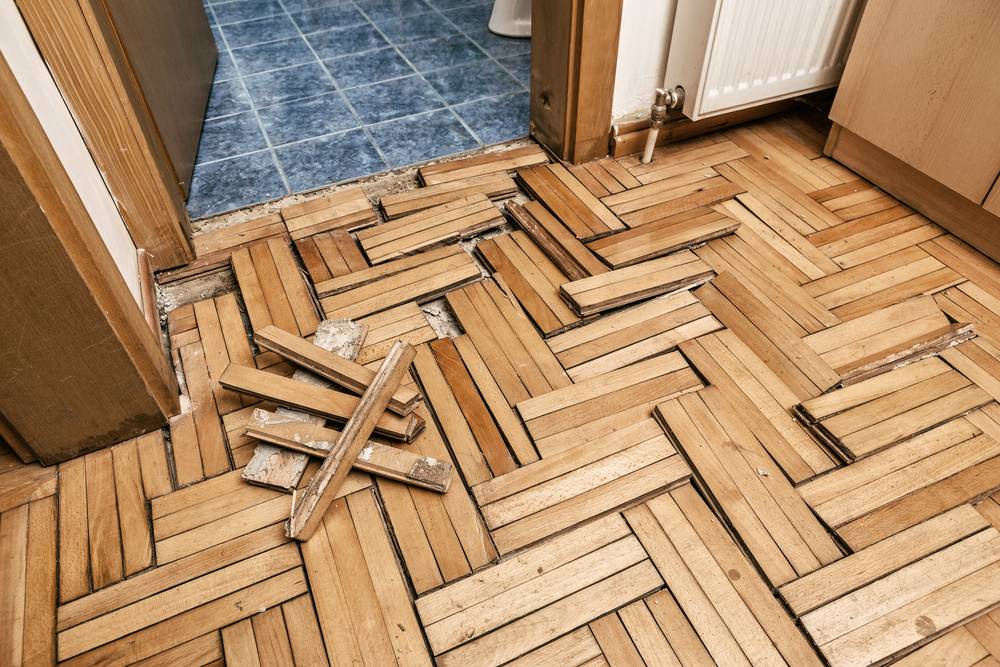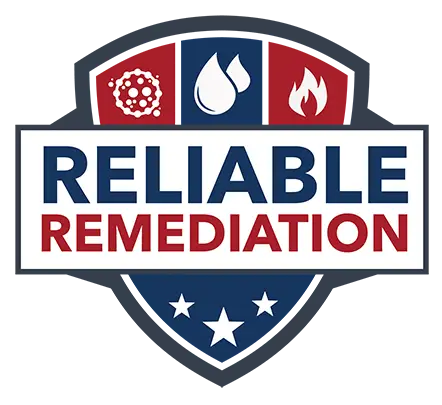What People in Brooklyn, CT and Eastern Connecticut Should Know
May in Eastern Connecticut is a beautiful time of year. Trees are in full bloom, the air is warming up, and people are finally spending more time outdoors. But along with the sunshine and spring blossoms, this season also brings ideal conditions for mold growth and water damage, especially after a wet April.
Across Windham and New London counties, homeowners often start to notice issues in basements, crawlspaces, and other moisture-prone areas. Heavy spring rain, aging infrastructure, and fluctuating temperatures all contribute to an increased risk of hidden water damage and mold problems.

Here’s what you should be looking out for this month – and how to take action.
1. Musty or Earthy Odors
If you walk into your basement or a closed-up room and get hit with a musty smell, don’t ignore it. That odor is a major sign that mold is growing somewhere nearby. In older homes around Brooklyn and Putnam, many basements are stone-walled or partially unfinished, which can allow moisture to seep in undetected.
💡 Tip: Try placing a dehumidifier in musty areas and see if the smell improves. If not, it’s time to call a professional to inspect behind walls or under flooring.
2. Discoloration on Walls or Ceilings
Spots, stains, or blotches – especially in shades of yellow, brown, or gray – can indicate a water leak or mold behind the surface. These are commonly found:
• Near leaky windows (common in historic homes in Eastern CT)
• Around ceiling corners after ice damming or roof runoff
• Behind appliances like washers or water heaters
💡 In Brooklyn, CT, homes with older rooflines or minimal guttering are particularly vulnerable after April storms.
3. Peeling Paint or Wallpaper
Peeling or bubbling paint isn’t just cosmetic—it’s a red flag that moisture is trapped beneath the surface. In many homes across Eastern Connecticut, especially in rural areas where ventilation may be limited, this can quickly lead to mold colonies forming inside the walls.
💡 Tip: Touch the wall where the paint is peeling. If it feels damp or soft, call a remediation expert to check for hidden damage.
4. Visible Mold Growth
Black spots in the corners of your bathroom? White fuzzy growth in your basement? These are both signs of active mold. In Eastern CT’s humid spring climate, mold can begin growing within 24-48 hours after a water intrusion—especially in places like:
• Basement walls and rafters
• Under carpeting or vinyl flooring
• Around windows and doorframes
💡 Brooklyn homes near wetlands or low-lying areas should be inspected regularly during the spring months.
5. Condensation or High Humidity
You might notice foggy windows, wet pipes, or damp floors. These are signs that your indoor humidity is too high, which creates perfect mold-growing conditions. May tends to bring more humid days in our region, especially after rain.
💡 Keep a digital humidity monitor in areas like basements or attics. Anything consistently above 55% is a risk zone.

6. Warped or Buckled Flooring
Flooring that suddenly lifts, warps, or becomes soft underfoot is a clear signal of water intrusion. This often happens in:
• Bathrooms (especially older homes with worn grout or tile)
• Kitchens with hidden leaks under dishwashers
• Basements with subfloor damage
💡 In rural Eastern CT, ground moisture and flooding from heavy spring storms can enter through small foundation cracks.
7. Increased Allergies or Respiratory Symptoms
Mold spores can trigger allergy-like symptoms – sneezing, coughing, watery eyes, or even asthma attacks. If your family is experiencing these issues more indoors than outdoors, it could be mold exposure.
💡 Watch for these symptoms worsening in specific rooms. That can help you track down a potential problem area.
Why This Matters in Eastern CT and Beyond
Many homes in this area are older, with natural stone foundations, crawlspaces, or wood siding – all of which are more susceptible to water intrusion. The climate here in May is damp and mild, with daytime temps in the 60s and frequent rain. That combination creates the perfect storm for mold to thrive if moisture is allowed to settle in.
Whether you’re in Brooklyn, Danielson, Killingly, Putnam, or anywhere in Windham County, it’s essential to stay on top of these seasonal threats. Mold not only damages property but can affect your health and indoor air quality.
What To Do If You Notice These Signs
1. Don’t wait – Mold spreads fast, especially with rising humidity.
2. Document the problem with photos and notes—this can help with insurance (if covered).
3. Avoid disturbing visible mold as it can release spores into the air.
4. Contact a certified mold remediation specialist in Eastern CT who understands local home structures and climate risks.
Prevention Tips for a Healthier Home
• Use a dehumidifier in basements and crawlspaces
• Check gutters and downspouts to ensure water flows away from your home
• Seal foundation cracks and inspect sump pumps
• Ventilate bathrooms and kitchens using exhaust fans
• Schedule a seasonal inspection with a local water damage expert

Need Help with Mold or Water Damage in Brooklyn, CT?
If you suspect mold in your home, it’s wise to reach out to a certified professional for a thorough inspection and a tailored remediation plan. Taking early action not only protects your health but can also help you avoid expensive repairs down the line. On average, professional mold remediation costs range from $1,500 to $6,000, depending on the size and severity of the problem. In more serious cases—such as contamination in HVAC systems or widespread structural damage—costs can exceed $10,000. Catching and addressing mold early is the best way to keep both your home and your budget in good shape.
Whether it’s a small patch of mildew or a full-blown basement moisture issue, local, professional help is your best defense. Look for a team familiar with Eastern Connecticut’s unique challenges – from high water tables to historic homes – to ensure your home stays dry, clean, and healthy all year round.
What To Do If You Notice These Signs
1. Don’t wait – Mold spreads fast, especially with rising humidity.
2. Document the problem with photos and notes – this can help with insurance (if covered).
3. Avoid disturbing visible mold as it can release spores into the air.
4. Contact a certified mold remediation specialist in Eastern CT who understands local home structures and climate risks.
Prevention Tips for a Healthier Home
• Use a dehumidifier in basements and crawlspaces
• Check gutters and downspouts to ensure water flows away from your home
• Seal foundation cracks and inspect sump pumps
• Ventilate bathrooms and kitchens using exhaust fans
• Schedule a seasonal inspection with a local water damage expert
We believe no one deserves to live in fear of their home making them sick – at Reliable Remediation we help people find peace of mind by restoring the health and safety of their home after water, fire, and mold damage.



